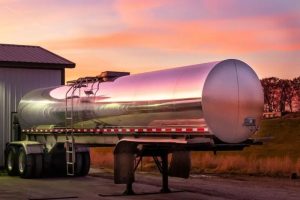
Grain is almost inaccessible at the moment, and all other feed is available is at a premium.
Feed prices have risen by over 50% in some cases, and with the conflict in Ukraine still ongoing, this will most likely remain volatile.
With some dairy farmers facing $70,000 to $100,000 in additional costs per 100,000 kilograms of milk solids this year, it’s time to start planning for 2023 now, as the next season could be bumpy.
The 2022 forecast Farmgate Milk Price of $9.60 has been revised back to $9.30 and escalating costs over the past six months have brought profits down.
However, going through to the 2023 season (which has a mid-range forecast Farmgate Milk Price of $9), dairy farmers are facing 12 months of high prices for fuel, feed, freight and fertiliser, not to mention rising interest rates and inflation – and no way of knowing how bad things might get.
We haven’t seen the full impact of these costs yet because expenses have only been increasing significantly over the past six months.
While the latest milk payout is good, costs are expected to increase to anywhere from 70 cents to $1 per kg of production.
If your farm does 100,000 solids, that’s $70,000 to $100,000 of additional costs. That’s going to hurt.
That’s why it’s important that everyone who is affected comes to grips with their financial position now. In such a volatile environment, the best approach is to know your position and keep an eye on it, so then you can make timely decisions.
Start by considering everything from break-even milk prices to pasture and feed requirements, then once you have your baseline, work to create a financial plan and establish goals for the year ahead.
Now, when it’s not as busy on the farm, is a prime time to be nailing down a forecast for the year.
It’s too late to look back at the end of the season and reflect that you haven’t done as well as you’d hoped. Instead, assess every couple of months.
If you’re not tracking where you want to be, you’re then in a position to ask: “Well, what can we do?”
Too many farmers still track the business’s performance in their head, but the Covid fallout, the war in Ukraine, increased interest rates, rising inflation and other instabilities have made it doubly important to know their financial position and have an up-to-date forecast.
For example, an increased interest rate of 2% might double your interest bill. It’s got the potential to unravel your business, so you’ve got to take pre-emptive steps to avoid that.
There are software programmes that can provide an accurate and up-to-date view of your current position.
You create your forecast at the start of the year and as you update it every couple of months (in line with GST works well), the software overwrites your previous forecast with actual data, so you’ll always have a current forecast closing position.
It isn’t just dairy farming that’s facing these headwinds.
Other farming sectors are facing the same cost increases, while those in the agricultural and horticultural industries are also dealing with labour shortages.
There’s also the pressure to pay a really good wage to secure good people, or to provide decent housing. Workers aren’t going to travel if the fuel costs too much.
That’s why all farmers should be thinking ahead as far as possible. The key thing is to use the winter season to keep on top of forecasting and build good habits for the future.
The old adage is “Save for a rainy day”. Time to flip that on its head. The next rainy day is your opportunity to plan for better weather.

























